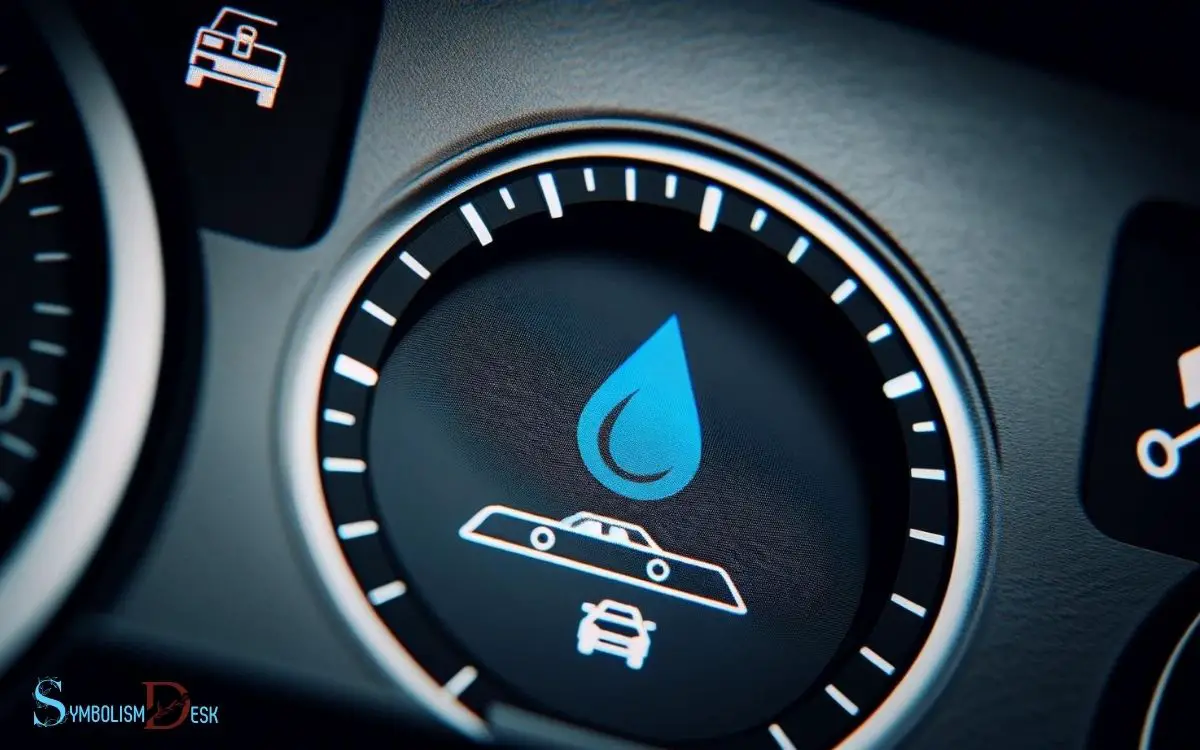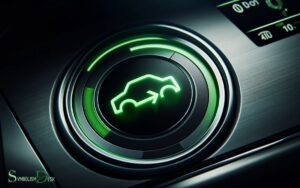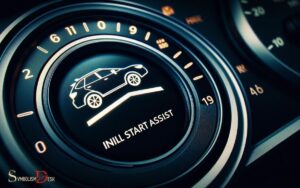What Is the Water Symbol on a Car Dashboard? Warning Light!
The water symbol on a car dashboard typically represents the engine’s coolant temperature warning light.
It alerts the driver when the engine’s temperature has exceeded normal operating levels, which could indicate low coolant levels, a malfunctioning radiator, or a faulty thermostat.
The coolant temperature warning light is a critical indicator of your vehicle’s health. When the water symbol illuminates, it’s often accompanied by a rise in the engine temperature gauge. Ignoring this warning can lead to overheating, which may cause severe damage to the engine.
Here’s what to look for and consider:
If the light comes on, you should pull over safely, turn off the engine, and wait for it to cool before checking the coolant level or seeking professional help.
Ignoring the water symbol alert on your dashboard can lead to significant engine damage and costly repairs, so it’s essential to act promptly when it appears.

Key Takeaway
Understanding the Water Symbol
The water symbol on a car dashboard indicates the coolant level in the vehicle’s engine. It’s an important indicator that helps drivers monitor the temperature of their engine.
When the symbol lights up, it means that the coolant level is low, and the engine is at risk of overheating. When this warning appears, it’s crucial to check the coolant level immediately and top it up if necessary to prevent damage to your engine. Understanding different car light symbols meanings can help you take swift action and avoid costly repairs. Regularly reviewing your vehicle’s manual ensures you’re familiar with these symbols and know how to respond appropriately.
This warning requires immediate attention to avoid potential damage to the engine. Coolant is vital for regulating the engine’s temperature and preventing it from overheating.
It’s important to regularly check the coolant level and top it up when necessary to ensure the engine runs smoothly. Ignoring this warning light can lead to costly repairs, so it’s crucial for drivers to understand and respond promptly to the water symbol on their car dashboard.
Causes of the Water Symbol
The low coolant level, which triggers the water symbol on the car dashboard, mainly occurs due to leaks or evaporation from the engine system.
Common Causes:
- Leaking Radiator: A damaged or corroded radiator can lead to coolant leaks.
- Damaged Hoses: Cracked or worn-out hoses can result in coolant leakage.
- Faulty Water Pump: A malfunctioning water pump can cause inadequate circulation of coolant.
If the low coolant level is not addressed promptly, it can lead to overheating, engine damage, and potential safety hazards. It’s crucial to inspect the cooling system, including the radiator, hoses, and water pump, to identify and rectify any issues causing the low coolant level.
Ignoring the water symbol on the dashboard can have serious consequences, as discussed in the following section about ‘effects of ignoring the water symbol’.
Effects of Ignoring the Water Symbol
Ignoring the water symbol on the car dashboard can result in severe engine damage and potential safety hazards if the low coolant level is not promptly addressed.
The engine relies on proper coolant levels to maintain a safe operating temperature. Ignoring the warning can lead to overheating, which may cause irreversible damage to the engine, such as a blown head gasket or warped cylinders.
Additionally, a low coolant level can result in poor heater performance, leading to discomfort for the occupants. Ignoring this warning can also lead to unexpected breakdowns, leaving drivers stranded on the road.
Therefore, it is crucial to address the low coolant level as soon as the water symbol appears to prevent costly repairs and ensure the safety and reliability of the vehicle.
Immediate Actions to Take
When the water symbol on a car dashboard appears, immediate action is crucial. The driver should check the engine temperature immediately and the coolant level as soon as possible. Ignoring these warning signs can lead to serious damage to the vehicle’s engine.
Check Engine Temperature Immediately
If the engine temperature symbol on the car dashboard lights up, drivers should immediately pull over and turn off the engine to prevent further damage. Ignoring this warning could lead to severe engine damage or even complete failure.
After taking these immediate actions, drivers should follow these steps:
- Open the hood and allow the engine to cool down before attempting to check the coolant level.
- If the coolant level is low, add a 50/50 mix of water and coolant to the reservoir.
- If the coolant level is normal, there may be a more serious issue with the cooling system that requires professional attention.
Taking these steps can help prevent costly repairs and keep the engine functioning properly. Always remember to prioritize safety and seek professional assistance if needed.
Check Coolant Level ASAP
Upon noticing the water symbol on the car dashboard, drivers should promptly check the coolant level to ensure the engine’s proper functioning. The coolant level should be checked as soon as possible to prevent potential damage to the engine.
Here is a table summarizing immediate actions to take when the water symbol appears:
| Immediate Action | Description |
|---|---|
| Stop the vehicle | Safely pull over and turn off the engine. |
| Allow the engine to cool down | Open the hood and wait for the engine to cool before checking. |
| Check the coolant level and top it off | Add coolant if the level is low, and check for any leaks. |
After checking the coolant level and taking the necessary actions, drivers should also consider preventive maintenance tips to avoid future issues.
Preventive Maintenance Tips
Car owners should prioritize preventive maintenance to keep their vehicles running smoothly. Checking coolant levels regularly and inspecting for fluid leaks are essential steps in preventing overheating and other engine issues.
By staying proactive, drivers can avoid major repairs and ensure their cars remain in optimal condition.
Check Coolant Levels Regularly
Regularly checking coolant levels is essential for maintaining the car’s optimal performance and preventing overheating.
This simple preventive maintenance task can help identify any potential issues with the cooling system before they escalate into more significant problems.
Here are some key reasons why checking coolant levels regularly is important:
- Prevents Overheating: Maintaining the right coolant levels ensures that the engine operates within the appropriate temperature range, preventing the risk of overheating.
- Identifies Leaks: Regular checks can help in identifying any leaks in the cooling system, allowing for timely repairs and preventing coolant loss.
- Preserves Engine Life: Adequate coolant levels help in preserving the engine’s longevity by ensuring it operates at the right temperature, minimizing wear and tear.
Inspect for Fluid Leaks
Drivers should regularly inspect their vehicles for fluid leaks as part of preventive maintenance. Fluid leaks can be indicative of a problem that, if left unattended, could lead to major vehicle issues.
The table below outlines some common fluid leaks to look out for and their potential causes.
| Fluid | Potential Causes |
|---|---|
| Engine Oil | Worn gaskets, damaged oil pan, or loose drain plug |
| Transmission | Faulty seals, damaged fluid lines, or a loose pan |
| Coolant | Leaking radiator, damaged hoses, or a faulty water pump |
Regularly checking for these leaks and addressing them promptly can help prevent more severe and expensive vehicle problems down the road.
Professional Assistance
When the water symbol on a car dashboard lights up, it is important to seek professional assistance to diagnose and address any potential issues.
Professional assistance is crucial in ensuring the correct identification and resolution of problems related to the car’s cooling system.
Seeking help from a certified mechanic or automotive technician can provide the expertise and specialized knowledge required to effectively deal with issues indicated by the water symbol.
- Expert Diagnosis: Professional assistance allows for a comprehensive evaluation of the car’s cooling system to pinpoint the exact cause of the water symbol illumination.
- Specialized Equipment: Certified mechanics have access to specialized tools and diagnostic equipment to accurately assess the cooling system’s functionality.
- Quality Repairs: Professional assistance ensures that any necessary repairs or maintenance are performed to high standards, promoting the vehicle’s optimal performance and safety.
Conclusion
The water symbol on a car dashboard should not be ignored. Ignoring it could lead to costly repairs and potential engine damage. Remember to regularly check and maintain your vehicle’s cooling system to prevent overheating.
Don’t delay in addressing any warning signs, as prompt action can prevent major malfunctions. Stay savvy, and stay safe on the road!






